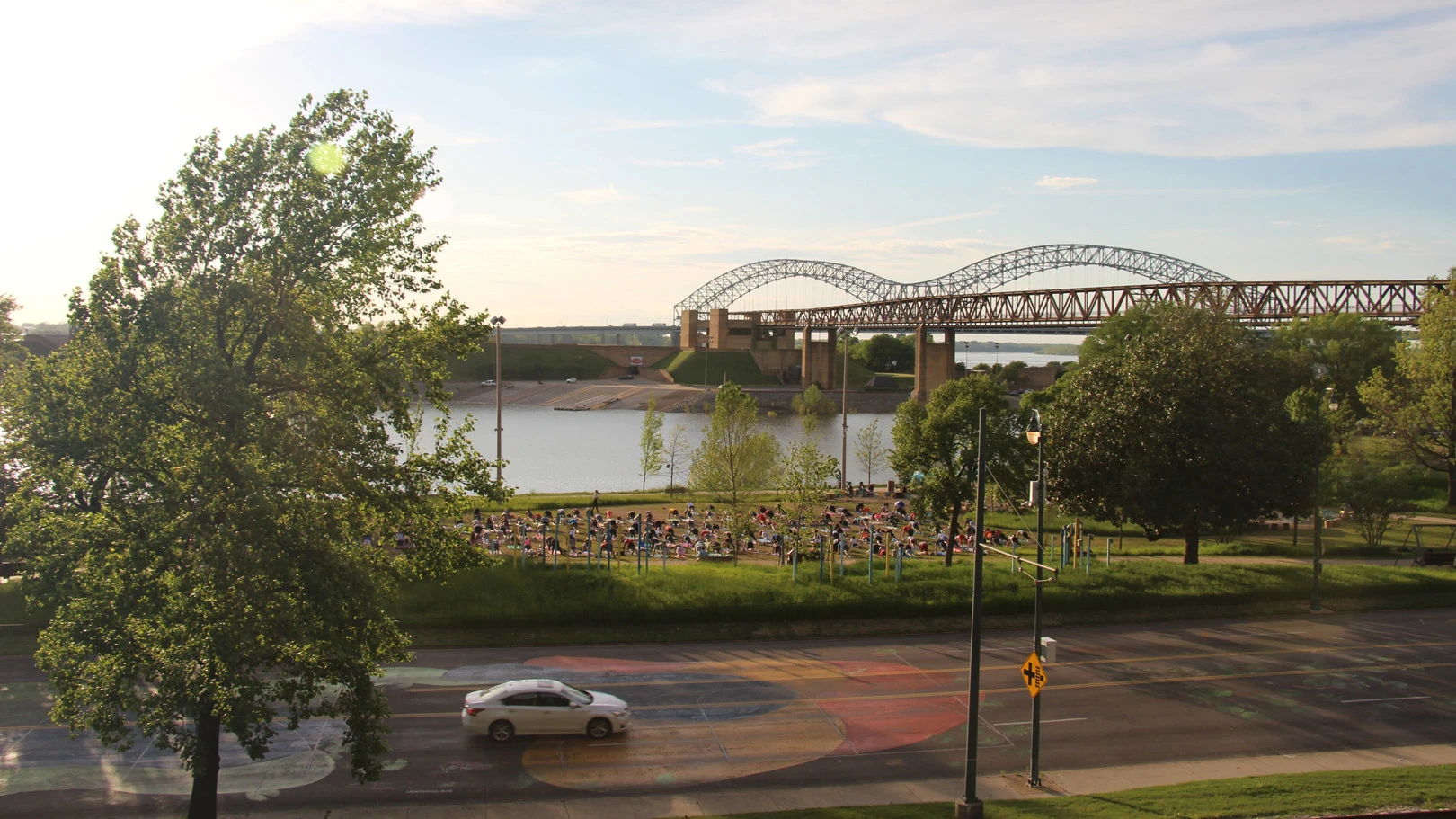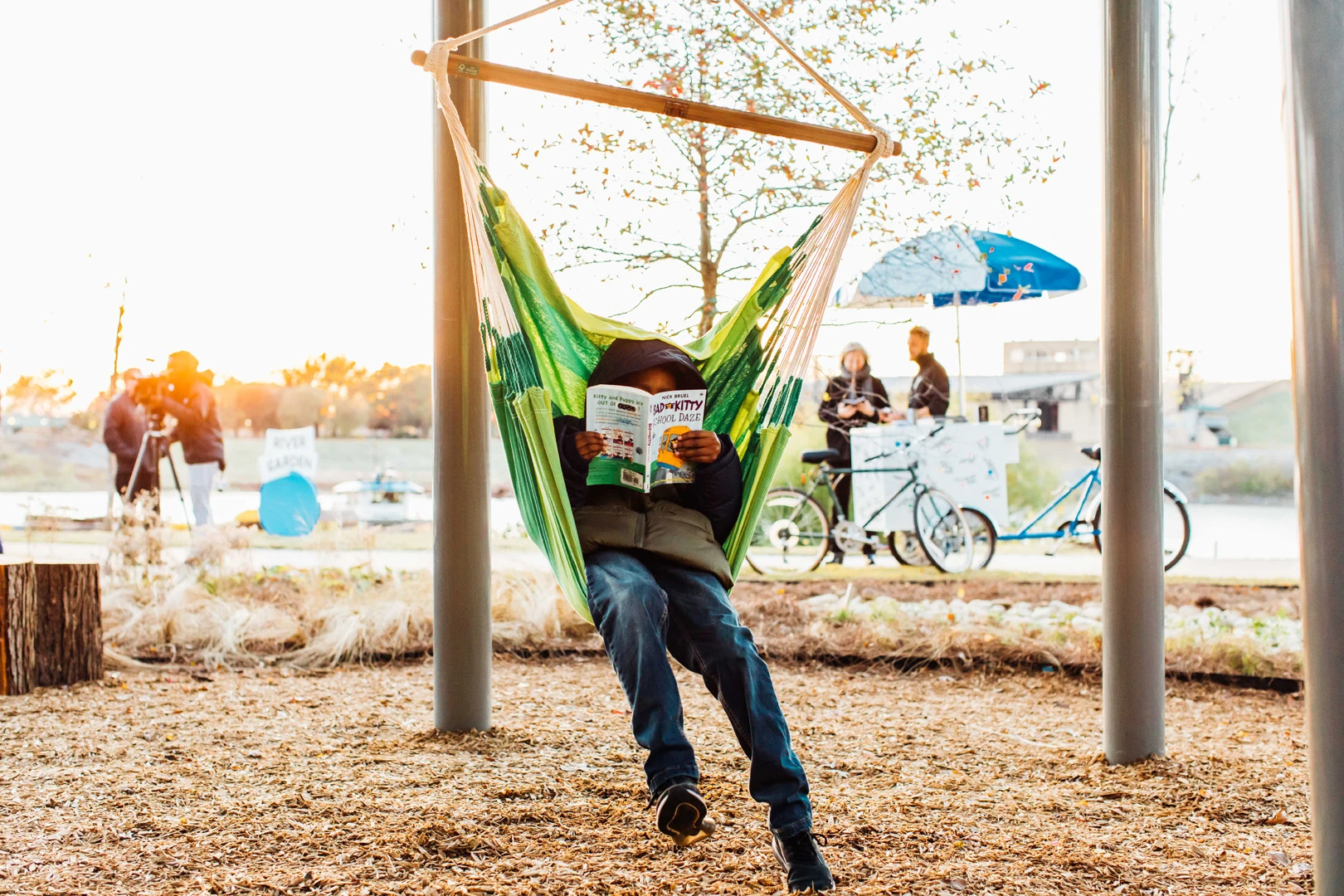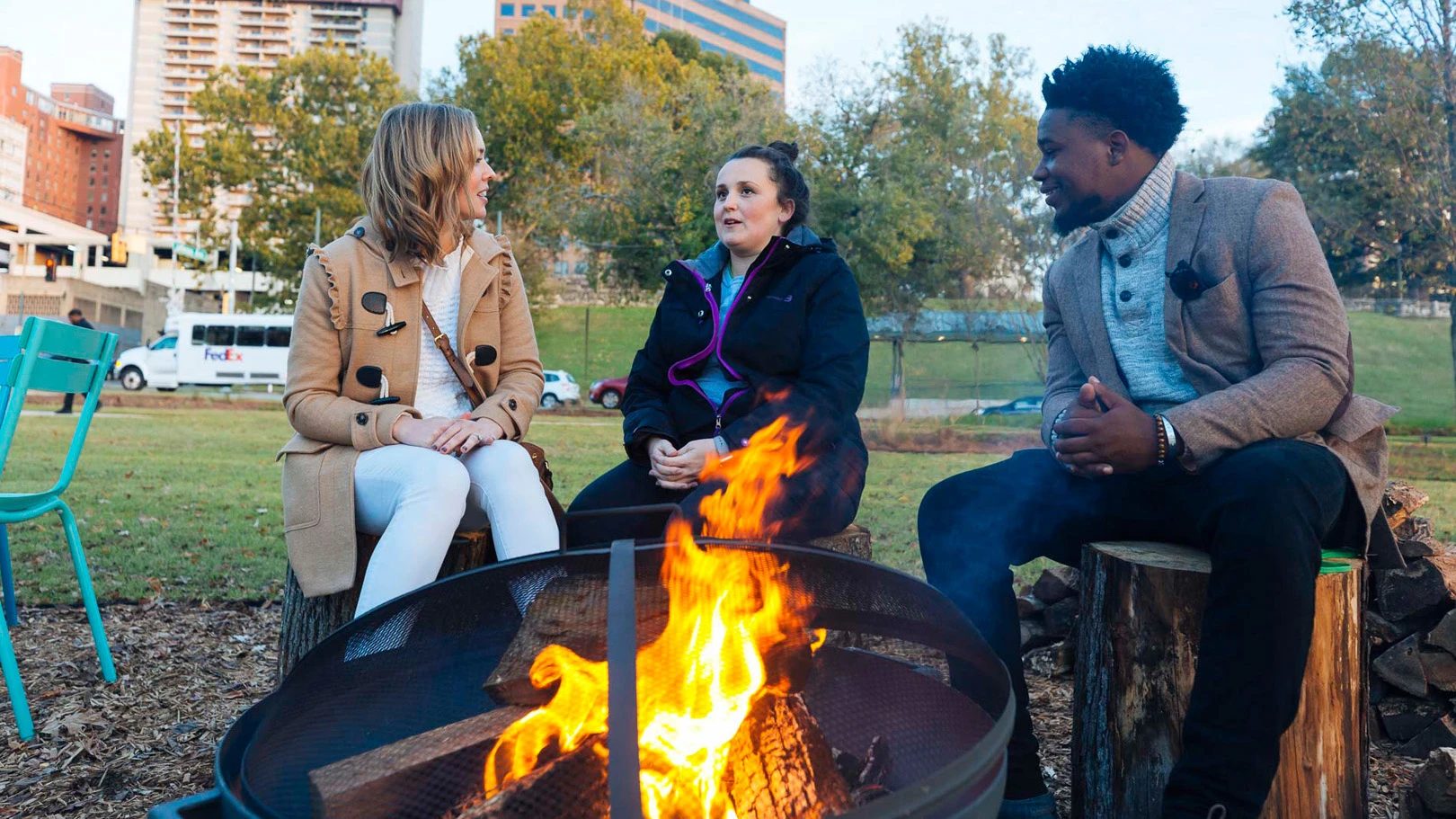Two years ago, a crane arrived at a park in downtown Memphis and took down a statue of Jefferson Davis, the president of the Confederacy during the Civil War, as a crowd watched and cheered. Now, after a two-year legal battle about the statue’s removal, the park, once known as Confederate Park, is being redesigned—this time, as a place that welcomes everyone.
Nearby, another park—also named after Davis—was redesigned and given a new name as well. Previously little used, it’s now filled with new play equipment—adult-sized, so everyone can play—and activities such as Friday-evening events around firepits, deliberately designed to bring people together who might not otherwise have interacted.

“Everything about that park was built with an eye towards equity and inclusion,” says Carol Coletta, head of the Memphis River Parks Partnership, a nonprofit that works to improve the riverfront in the city and manages both parks.
The parks were renamed in 2013, when the city council said that they evoked a racist past. A third downtown park, named after Nathan Bedford Forrest, a Confederate general who later became the first grand wizard of the Ku Klux Klan, was renamed Health Sciences Park. “Memphis is a majority-black city in a majority-black county,” says Coletta. “So in a city like Memphis, I think sometimes your reality is out of phase with the way you present your city. This is certainly one of those ways.”

The same year, Tennessee passed a law banning the removal or relocation of a memorial on public property without permission from the Tennessee Historical Commission. Memphis applied for permission to remove the statues in Confederate Park and Forrest Park, but when the request was denied, it looked for a loophole, transferring ownership of the two parks to a new nonprofit called Memphis Greenspace in a late-night vote. Because the parks were no longer public property, it was legal to take the statues down, and cranes were deployed the same night. “It was a clever maneuver that couldn’t be undone politically,” says Coletta.
It’s worth noting that most Confederate memorials of this kind weren’t erected immediately after the Civil War, but during the Jim Crow era (the statue of Forrest was erected in 1904.). Confederate general Robert E. Lee argued against Civil War memorials, and historians explain that most of the statues were intended less to honor the past than to protect a “white supremacist future.”

Memphis River Parks Partnership started with a redesign of River Garden, formerly Jefferson Davis Park. The space is small—just the length of a city block—but turned into a destination. A giant “treehouse,” with climbing nets, hammock swings, and human-sized bird nests, looks out over the Mississippi River. In another area, swings and benches overlook a meadow planted with wildflowers. The organization now hosts free yoga once a week, concerts, and dancing. On Friday nights, visitors sit next to one another at firepits to roast marshmallows.
“We’re trying in every way we can to mix people of different races, different ages, different family types,” Coletta says. “And most especially and most difficult, of different incomes.” The organization recognizes that for low-income people, being exposed to a more diverse social network is critical for creating opportunities for social mobility. At each event, she says, the group tries to make sure that people “are within conversation distance. . . . We ask ourselves the question 20 times a day, ‘What will this produce in terms of equity, inclusion, and opportunity, and can we tweak this?'”

Former park maintenance staff, retrained as park rangers, greet visitors and are tasked with making the park welcoming for everyone. “The staff developed a new set of norms that were very visitor-focused so that everyone coming into that park would feel personally greeted,” she says. “They would be invited to come back.” After hiring an African American contractor to lead the redesign, the organization ensured that park staff were as diverse as the city itself.
Now, after the Tennessee Supreme Court recently refused to hear the appeal of a lawsuit that challenged the city’s right to sell Memphis Park and Health Sciences Park, the organization is beginning work to redesign Memphis Park. The base of the former statue and a “rebel” bench have been removed, and dozens of trees will be planted. Birdhouses painted by local students will be added throughout the park. The statue won’t be replaced by another statue, but by a table where people can sit and talk. “Instead of going monumental in the very next iteration, we thought people should be invited to use the space,” she says.
It’s a model that she hopes other cities can follow, as the organization continues to learn how to make public spaces more inclusive. “There is no handbook,” she says. “We feel like, in some ways, we’re writing the handbook.”
Recognize your brand’s excellence by applying to this year’s Brands That Matter Awards before the early-rate deadline, May 3.
